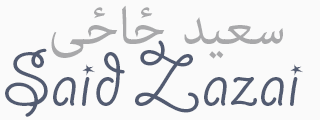In the recent years, a new form of multilateral cooperation has emerged that is more inclusive and open than the traditional intergovernmental approaches. A solution oriented governance model where multiple stakeholders work in collaboration to achieve the purpose. These stakeholders could be from various states working at the global level or it could be bound to a nation-state which is referred to as the mutlistakeholderism at the regional or local level. Besides government and private sector as the stakeholders, civil society organizations, academia and technical communities are also considered as the key players in the policy making, implementation and evaluation under this model.
UN defines multistakeholder partnerships as “voluntary and collaborative relationships between various parties, both public and non-public, in which all participants agree to work together to achieve a common purpose or undertake a specific task, as mutually agreed, to share risks and responsibilities, resources and benefits”. The term voluntary puts the stakeholders’ stake and interest into question, and transparency and accountability becomes pivotal to the success of this model of governance.
Global Policy Forum (2014) criticizes the very same term ‘voluntary’ to becoming a leverage of not holding multistakeholder partnerships accountable.
Multistakeholder model has been practiced by the World Bank and UN across different sectors. Among the Internet governance entities ICANN, IETF and Internet Society use and advocate for regional and local level multistakeholder governance. True and transparent multistakeholderism brings and implements democracy at the grassroot level by giving voice to the stakeholders who are traditionally sidelined because of political or economic reasons. These stakeholders generally represent the interests of their communities, i.e. general public.
The fundamental difference between this governance model and other multilateral models is that civil society can play a key role in balancing the power asymmetry between the government and private sector whether over infrastructure or the content. However, as indicated in the Transparency and Accountability Initiative’s report, civil society organizations lack the autonomy from their governments allowing government officials to use civil society as mouthpiece for their political agendas.
Bringing multistakeholder governance model to the local or national level could be a great challenge to countries where democracy is not practiced in its true meaning by the public service institutions. The use of the term multistakeholderism could provide cover to government officials as highlighted by Transparency and Accountability Initiative.
The Global Policy Forum (2014) criticizes the Multi-Stakeholder Partnerships (MSP) and says that “the role of the state as primary duty bearer for guaranteeing the human rights of its citizens and ensuring sustainable development is lost through the multi-stakeholder approach.” This could be a reasonable concern for governance structures that practices true democracy and provides transparency in the public service delivery. However, developing countries in general and especially Least Developed Countries (LDCs) in particular could benefit from the new model given there is support from international organizations to the right representatives of the various stakeholders.
Authoritarian government officials, particularly regimes high in corruption index, usually do not practice including civil society organizations, academia and research organizations, technical communities or sometimes even private sector in developing ICT policies. They, sometimes, don’t include other government agencies in the policy development process. If they do include any stakeholder in the process, it would either be to justify the requirements of the process or some personal gains. Government officials in this category of nation-states are involved in more than one sector. They usually run private businesses and also have huge influence over technical civil societies or media in general. Their representation as any stakeholder at the global meetings could be a huge set-back to the internet development discussions at the local community.
When we talk about stakeholders the two things that come to mind are the interest that a stakeholder brings in or takes out of the deliverables when addressing a common social aim and the representation of stakeholders at the national and also global level.
Transparency and accountability, especially in the stakeholder representation, are critical to the success of multistakeholder governance model, particularly countries that are deep-rooted in corruption. The mere representation of certain stakeholders on the table does not translate into organizational culture change, identification of national issues, creation of open discussion of diverse group on those issues and capacity development. Representation poses significant challenge to transparency of this model. The multiple hat-wearing phenomenon is sometimes badly abused and the representative though talks on “individual capacity” but his/her thoughts and ideas are influenced by the multiple roles s/he plays across different sectors. The challenge, however, could be addressed if the representative releases all his affiliations before making a statement and let the audience decide on his/her stake.
Civil societies can play critical role in the policy development and implementation processes and multistakeholder model accommodates that best. However, bad selection of individuals representing various stakeholders at the national level could hinder in the internet development matters in the country but also cripple the multistakeholder model.







